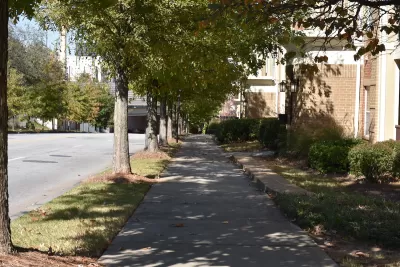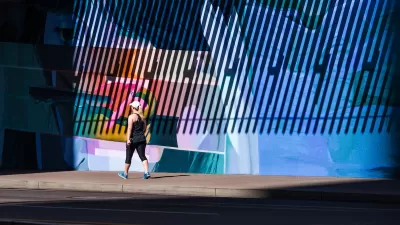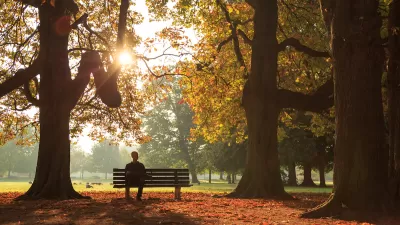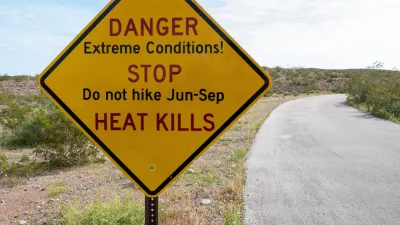New research suggests that cooling pavement treatments can actually make pedestrians standing on it feel hotter.

A popular new tool for cooling urban streets and sidewalks could have some unintended consequences, reports Linda Poon in Bloomberg CityLab. According to Poon’s article, “recent research in Phoenix has resurfaced a glaring tradeoff: The reflective coating can make pedestrians standing on the treated pavement feel even hotter.”
“When [professor V. Kelly Turner] and researchers at Arizona State University looked at the impacts of the first US program in Los Angeles, they found that around noon on a hot, dry day, a person standing on cool pavement could feel more than 7 degrees warmer than if they were to stand on uncoated asphalt. The mean radiant temperature, which is a measure of how humans experience the heat, fell in the afternoon but was still 3 degrees warmer.”
Those findings were reaffirmed by an Arizona State University study. However, Poon notes that “ASU’s study suggested minimal difference in mean radiant temperatures between sidewalks near traditional asphalt streets and those near reflective pavement,” meaning pedestrians walking on surfaces near coated streets but not directly on coated surfaces wouldn’t be affected.
For Turner, this points to a need to prioritize shade trees, a proven solution to urban heat, before trying more experimental solutions. But cooling pavement treatments have their place. By dramatically reducing surface temperatures, cool pavements can prevent burn injuries. “Perhaps a more pronounced effect of cool pavement technology that further appeals to cities is that it decreases thermal strain on the pavement, reducing cracking and helping extend its lifespan.” And one pavement treatment used in the Pacoima neighborhood of Los Angeles is showing promising results, with early research indicating that the treatment cools ambient temperature and doesn’t create glare in the same way as others.
Until more data on cool pavement coatings is available, experts believe cities should “carefully consider where to apply [them], and weigh both the costs and benefits alongside other interventions.”
FULL STORY: The Hottest Urban Heat Solution Comes With a Glaring Tradeoff

Maui's Vacation Rental Debate Turns Ugly
Verbal attacks, misinformation campaigns and fistfights plague a high-stakes debate to convert thousands of vacation rentals into long-term housing.

Planetizen Federal Action Tracker
A weekly monitor of how Trump’s orders and actions are impacting planners and planning in America.

Chicago’s Ghost Rails
Just beneath the surface of the modern city lie the remnants of its expansive early 20th-century streetcar system.

Bend, Oregon Zoning Reforms Prioritize Small-Scale Housing
The city altered its zoning code to allow multi-family housing and eliminated parking mandates citywide.

Amtrak Cutting Jobs, Funding to High-Speed Rail
The agency plans to cut 10 percent of its workforce and has confirmed it will not fund new high-speed rail projects.

LA Denies Basic Services to Unhoused Residents
The city has repeatedly failed to respond to requests for trash pickup at encampment sites, and eliminated a program that provided mobile showers and toilets.
Urban Design for Planners 1: Software Tools
This six-course series explores essential urban design concepts using open source software and equips planners with the tools they need to participate fully in the urban design process.
Planning for Universal Design
Learn the tools for implementing Universal Design in planning regulations.
planning NEXT
Appalachian Highlands Housing Partners
Mpact (founded as Rail~Volution)
City of Camden Redevelopment Agency
City of Astoria
City of Portland
City of Laramie





























